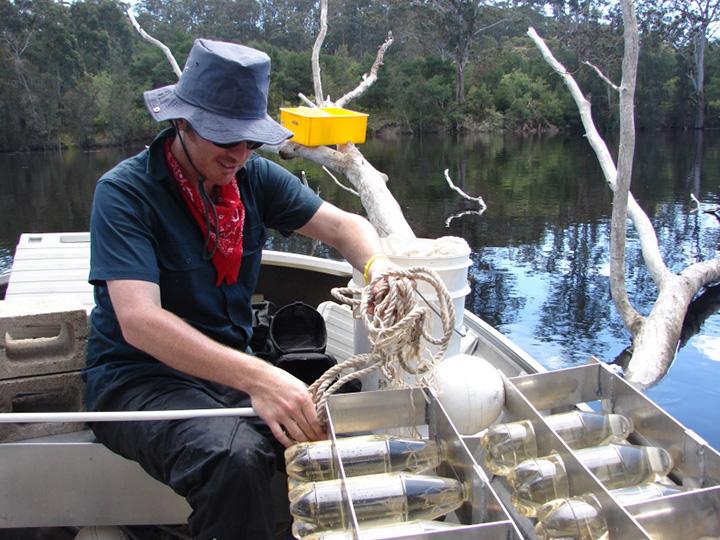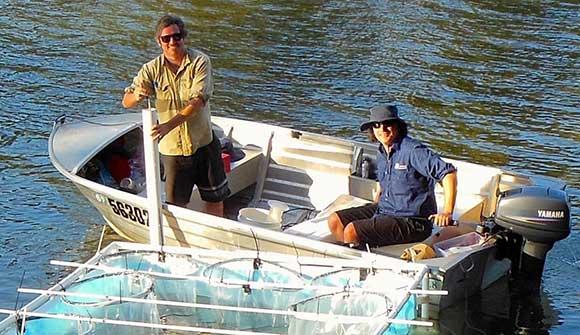
James Hitchcock working on the Bega River estuary.
Each year, the Sydney Institute of Marine Science (SIMS) and the NSW Office of Environment and Heritage award the Tony Roach Prize to an accomplished young scientist for their research into marine or estuarine environmental science in NSW.
The prestigious prize honours the memory and career of eminent scientist and UTS alumnus Dr Tony Roach, a long-serving contributor to the marine and environmental sciences in NSW.
This year, the 2016 Tony Roach Prize was awarded to fellow UTS alumnus James Hitchcock for his paper entitled ‘After the flood: changing dissolved organic carbon bioavailability and bacterial growth following inflows to estuaries.’
James co-authored the paper with his PhD supervisor Dr Simon Mitrovic, Senior Lecturer in Freshwater Ecology from the UTS School of Life Sciences. In 2015, the paper was published in the academic journal Biogeochemistry (Vol. 124).
The “After the flood” project measured changes in carbon levels in rivers and estuaries after rain and flood events, when large quantities of carbon from soils and leaf litter wash and dissolve into water. After rain events, Hitchcock would take water samples from Sydney basin estuaries, before returning to the lab to conduct microscopic analysis.
“I found that the carbon that enters estuaries changes dramatically during flooding events,” explained Mr Hitchock.
“During and after floods, the quality of carbon doubles, and the growth of microbes is five to ten-fold higher than in non-flooding periods. This is an important finding, as traditionally, the quality of carbon has been considered static.
“It seems this is partly due to the fact that most water sampling is done when it’s not raining, because who wants to stand around in the rain doing science… apart from me!”
The research findings have important implications for the management of coastal ecosystems. As co-author Dr Mitrovic explained, “James’ findings underpin some government rules about how water should be shared between irrigators and the environment to ensure that the ecological outcomes for the river are being met and optimised.”
Hitchcock’s interest in estuarine science was piqued during a second-year undergraduate excursion to the south coast of NSW as part of the Bachelor of Environmental Science.
“For one of the projects, we went to Sussex Inlet and studied how microscopic plankton changed as the tide came in and out,” recalled Hitchcock. “I became fascinated by the idea that in every drop of water there is a whole little world when you look at it under the microscope. Our coasts are really beautiful places, and for me, understanding the science of how they work is a deeper way of appreciating how amazing estuaries and coasts are.”
Hitchcock, who currently works for the NSW Department of Primary Industries, was honoured to receive the Tony Roach Prize after years of hard work.
“Science can often be hard and unrewarding job, spending hours looking down a microscope or tearing your hair out doing statistics, so having the privilege of being recognised for your hard work by the Sydney Institute of Marine Sciences and the Office of Environment and Heritage is fantastic,” he said.
“I’m going to use the prize money to help fund a trip to present a paper at a conference in Hawaii in February.”

James Hitchcock working in the field as a Water Quality Officer.

